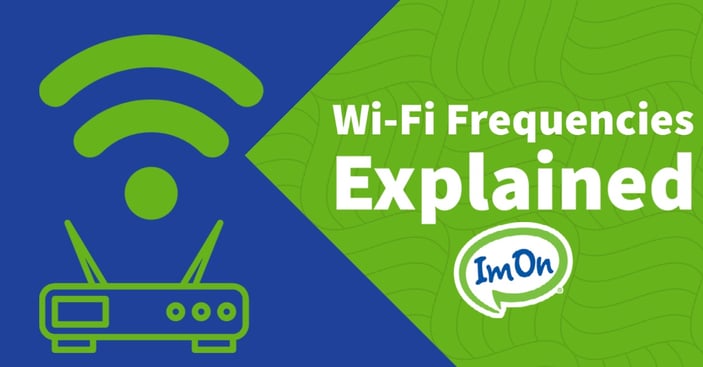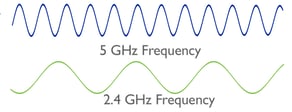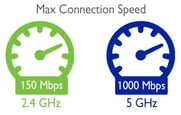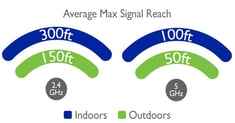 Over the last decade, the Internet has really changed the way we live, socialize, and stay informed. Nowadays, there are two ways you can access the Internet. The first is by using an Ethernet cable to connect your device directly to your modem. This wired connection offers a reliable performance with faster speeds and more security. However, being tethered to one spot is not always convenient. That’s why most people use a router to connect to the Internet wirelessly.
Over the last decade, the Internet has really changed the way we live, socialize, and stay informed. Nowadays, there are two ways you can access the Internet. The first is by using an Ethernet cable to connect your device directly to your modem. This wired connection offers a reliable performance with faster speeds and more security. However, being tethered to one spot is not always convenient. That’s why most people use a router to connect to the Internet wirelessly.
Wi-Fi routers use radio waves to transfer data from your device to the Internet and vice versa. Today, most routers transmit data using two different radio frequencies or “bands” - 2.4 GHz and 5 GHz. Depending on which one of these frequencies your devices connect to can impact your Internet experience.
So how are these two frequencies different and which one should you use?
 If you could see these two different radio waves in the air, they would look something like this. As you can see, the 5 GHz frequency has shorter waves (more ups and downs in the same area) than the 2.4 GHz frequency. This higher “energy” allows the 5 GHz frequency to carry more data and accommodate faster Internet speeds. On average, the max speed when connecting to the 2.4 GHz frequency is around 150 Mbps, while a connection on the 5.0 GHz frequency can handle speed up to 1 Gig (1000 Mbps).
If you could see these two different radio waves in the air, they would look something like this. As you can see, the 5 GHz frequency has shorter waves (more ups and downs in the same area) than the 2.4 GHz frequency. This higher “energy” allows the 5 GHz frequency to carry more data and accommodate faster Internet speeds. On average, the max speed when connecting to the 2.4 GHz frequency is around 150 Mbps, while a connection on the 5.0 GHz frequency can handle speed up to 1 Gig (1000 Mbps).

While the 5 GHz frequency can handle higher speeds, it does come with downfalls. A 5 GHz connection has a harder time transmitting through walls and floors, meaning it can’t reach as far. According to Lifewire.com, the general rule is that a Wi-Fi signal using 2.4 GHz frequency can reach up to 150ft indoors, while a signal using the 5 GHz frequency can only reach about 50ft. Keep these numbers in mind when deciding what devices to connect to which frequency. It’s better to connect your cell phones and tablets to the 2.4 GHz frequency since it can reach farther, and you tend to use these devices throughout your home. For more stationary device, like smart TVs and video game consoles, consider connecting them to the 5 GHz frequency so you can take advantage of the higher speeds the 5 GHz connection offers.
using the 5 GHz frequency can only reach about 50ft. Keep these numbers in mind when deciding what devices to connect to which frequency. It’s better to connect your cell phones and tablets to the 2.4 GHz frequency since it can reach farther, and you tend to use these devices throughout your home. For more stationary device, like smart TVs and video game consoles, consider connecting them to the 5 GHz frequency so you can take advantage of the higher speeds the 5 GHz connection offers.
 The last thing to consider when looking at these two different Wi-Fi frequencies is Wi-Fi congestion. Many other household devices use the same 2.4 GHz radio frequency as your router, including microwaves, baby monitors, cordless phones, cell phones, garage door openers, and your neighbor’s router. When multiple devices attempt to use the same radio frequency, it causes overcrowding and interference. You may experience unexpected drops in your Wi-Fi signal, slow speeds, and poor signal strength. Fewer household items can currently use the 5 GHz frequency, so it is less congested and offers a more consistent signal strength.
The last thing to consider when looking at these two different Wi-Fi frequencies is Wi-Fi congestion. Many other household devices use the same 2.4 GHz radio frequency as your router, including microwaves, baby monitors, cordless phones, cell phones, garage door openers, and your neighbor’s router. When multiple devices attempt to use the same radio frequency, it causes overcrowding and interference. You may experience unexpected drops in your Wi-Fi signal, slow speeds, and poor signal strength. Fewer household items can currently use the 5 GHz frequency, so it is less congested and offers a more consistent signal strength.
